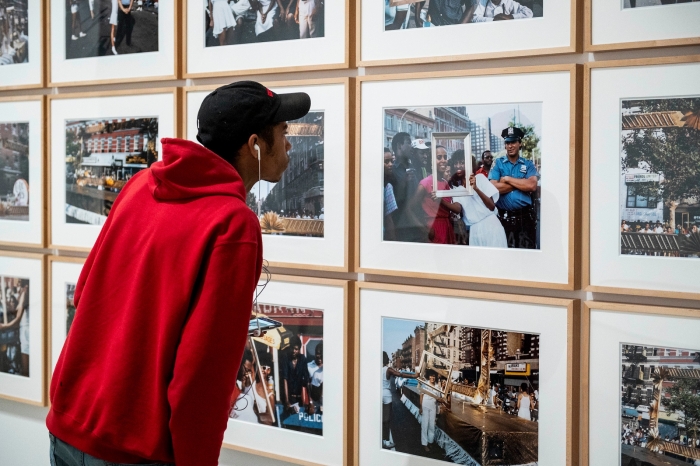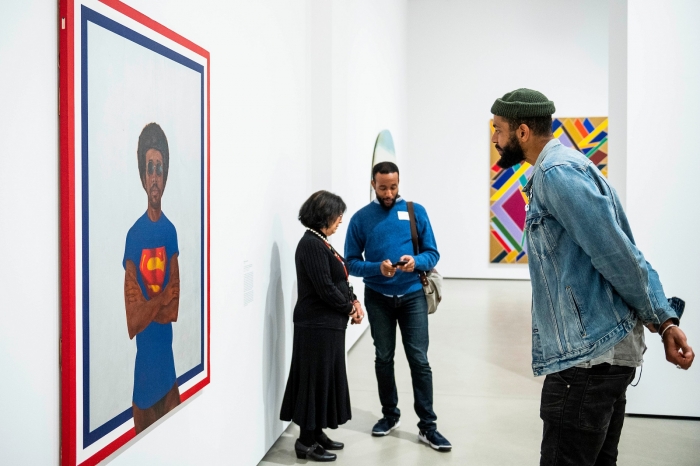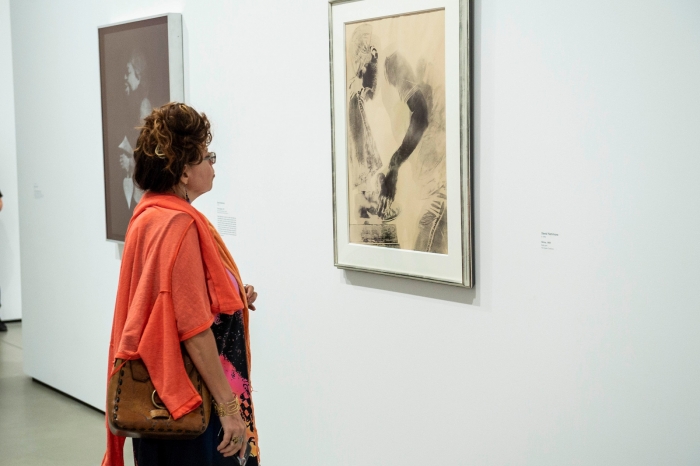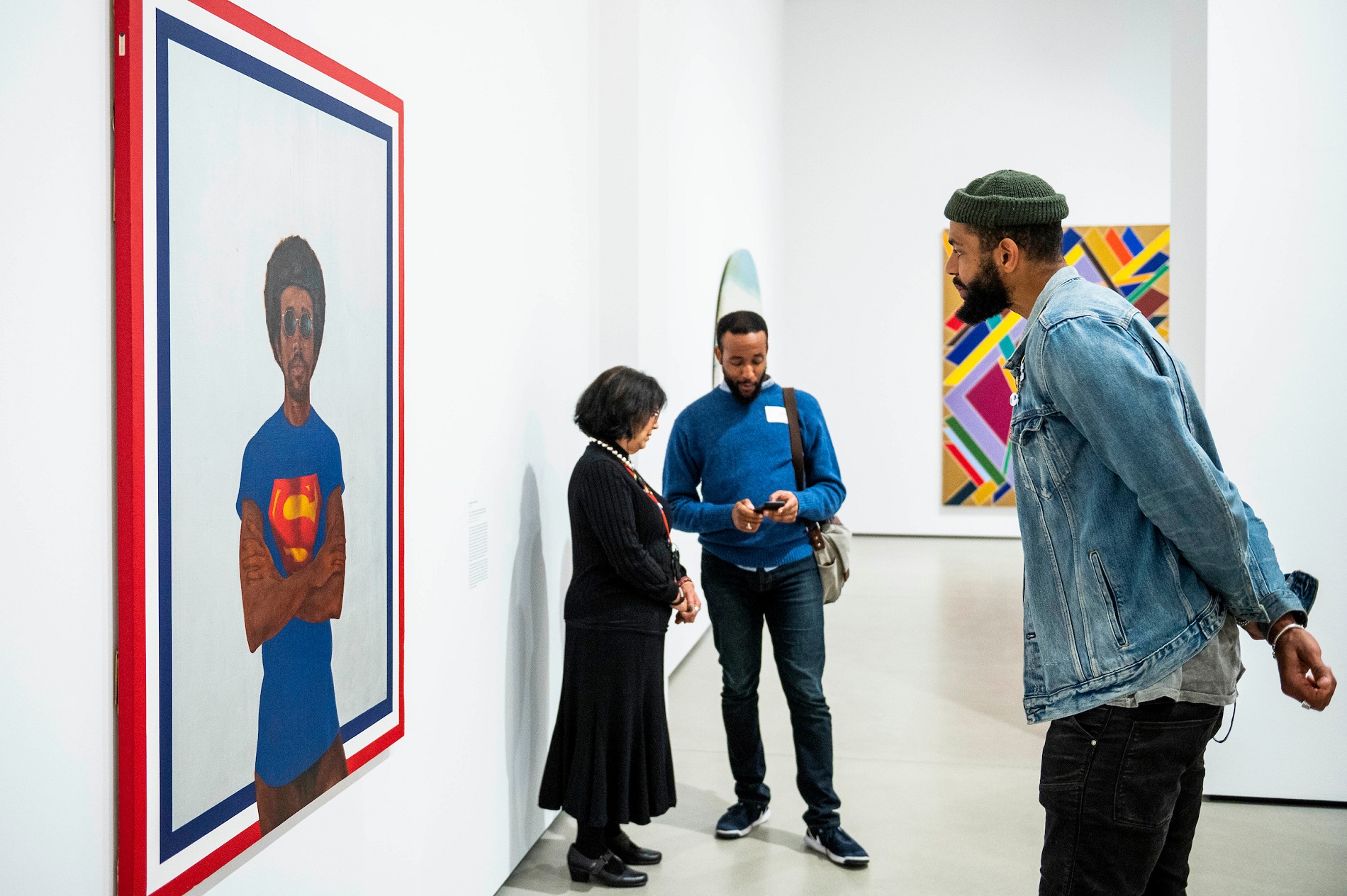
The Broad’s “Soul of a Nation: Art in the Age of Black Power 1963-1983” opened nearly six months ago at The Broad, but you still have a chance to experience this powerful look into the influence of the Civil Rights movement and the Black Power movement on art and expression from 1963 to 1983.
Highlighting work from artists such as Romare Bearden, Barkley Hendricks, Noah Purifoy, Martin Puryear, Faith Ringgold, Betye Saar, Alma Thomas, Charles White and William T. Williams, “Soul of a Nation” celebrates their contributions during a time in world history that was pivotal for Black artists and African Americans as a whole.
The exhibit starts on a timeline with the March on Washington for Jobs and Freedom where Dr. Martin Luther King, Jr.’s delivered his famous “I Have a Dream” speech. It takes us through the experiences and expressions of a time when Black creators pushed to reclaim their voices and tap into the pride of their heritage. The call for Black power in the midst of a tumultuous, racist and hostile environment is reflected through the content and aesthetic of the art presented in this exhibit.

“Soul of a Nation” was originally presented by London’s Tate Modern in 2017 and has since traveled to the Crystal Bridges Museum of American Art in Arkansas and the Brooklyn Museum in New York. As you move through galleries featuring work from over 60 artists including paintings, sculptures and photography, the vibrancy and thread of Black Power throughout the art is a reminder of the ways racism, identity and marginalization of African Americans is so deeply written into the art and media of this era. Yet, we rarely see these Black artists receiving credit and acclaim in museums and art history books. This exhibition is a beautiful attempt at challenging the books of art history pages, adding in the names of artists like Noah Purifoy, Loraine O’Grady and a host of artisst, known and unknown, who are often overlooked and rarely credited for their strong influence on art.
The Los Angeles edition of the show includes three specific galleries that highlight the significant role of Black Los Angeles artists held during the civil rights movement including a pioneering L.A. artist Betye Saar. The show even features a piece from Beyonce and Jay-Z’s private collection – David Hammons “Shine.” After visiting “Soul of a Nation,” in London, The Broad’s founding director, Joanne Heyler decided to bring it to Los Angeles being that so much of L.A. is featured within it. Many of the exhibition’s highlights are rooted in the West Coast, and those segments are even further spotlighted in this leg of the traveling exhibit.
The Los Angeles exhibition also featured several events and programs in alignment with its content. The Broad’s “Black Fire Sessions,” for instance, was a two-part series featuring “live music by innovators of free jazz alongside younger artists at the intersections of jazz, R&B, electronic, hip-hop and soul.” Tickets to the second night of Black Fire Sessions completely sold out with headliners like Kelsey Lu and Anthony Braxton at the show on Aug. 14.

“Soul of a Nation” is still open through September 1 and if you haven’t yet visited, there is still plenty of time to experience what so many people have called a moving and powerful look into what is the soul of our nation — Black art and culture.
One of the last points to view before exiting the exhibit is Lorraine O’Grady’s 1983 “Art Is…” which was a series of 40 photos taken one sunny Harlem day in September 1983.
“Lorraine O’Grady entered a parade float in the Harlem African American Day Parade as her alter ego Mademoiselle Bourgeoisie Noire. She displayed a large gold picture frame in the float, and hired fifteen dancers to carry smaller gold frames,” reads the description of the photos. “The event was inspired by her friend who said, ‘avant-garde art doesn’t have anything to do with Black people.’ Some members of the crowd responded enthusiastically, ‘Frame me, make me art!’ and ‘That’s right. That’s what art is; we’re the art!”
“Soul of a Nation” closes September 1 at The Broad. For tickets and more information, visit www.thebroad.org/soul-of-a-nation.







